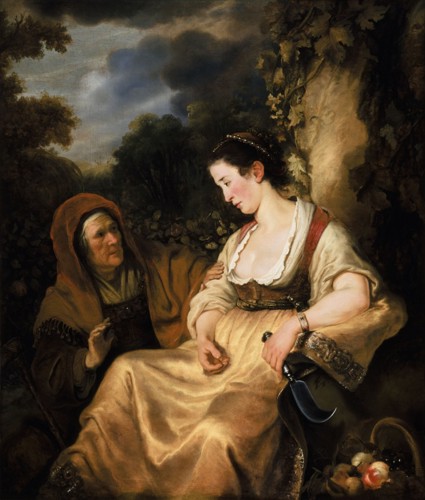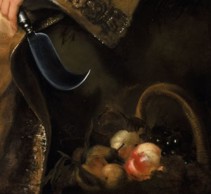- Events & Programs Home
- Calendar
- Accessibility
- Adults
-
Families & Teens
- Families & Teens Home
- 10x10 Teen Art Expo
- Art on the Rise
- Art Together: Art Making for Families with Children Ages 3–5
- Babies Sing with May Festival Minis
- Boy Scouts / Girl Scouts
- CAM Kids Day
- Family Storytime and Gallery Walk
- Family Studio: Art Making for Families with Children Ages 6–12
- Games in the Galleries
- Members-Only Baby Tours
- Public Baby Tours
- REC Reads
- Rosenthal Education Center (REC)
- Saturday Morning Art Class
- See Play Learn Kits
- Summer Camp
- Teen Fest: Zine and Comic Exchange
- RECreate
- Teachers
- Community Outreach
- Fundraisers
- Plan Your Own Event

- Events & Programs Home
- Calendar
- Accessibility
- Adults
-
Families & Teens
- Families & Teens Home
- 10x10 Teen Art Expo
- Art on the Rise
- Art Together: Art Making for Families with Children Ages 3–5
- Babies Sing with May Festival Minis
- Boy Scouts / Girl Scouts
- CAM Kids Day
- Family Storytime and Gallery Walk
- Family Studio: Art Making for Families with Children Ages 6–12
- Games in the Galleries
- Members-Only Baby Tours
- Public Baby Tours
- REC Reads
- Rosenthal Education Center (REC)
- Saturday Morning Art Class
- See Play Learn Kits
- Summer Camp
- Teen Fest: Zine and Comic Exchange
- RECreate
- Teachers
- Community Outreach
- Fundraisers
- Plan Your Own Event
Blog: CAM Uncovered
Blog: CAM Uncovered
- Home
- Plan Your Visit
- Art
-
Events & Programs
- Events & Programs Home
- Calendar
- Accessibility
- Adults
-
Families & Teens
- Families & Teens Home
- 10x10 Teen Art Expo
- Art on the Rise
- Art Together: Art Making for Families with Children Ages 3–5
- Babies Sing with May Festival Minis
- Boy Scouts / Girl Scouts
- CAM Kids Day
- Family Storytime and Gallery Walk
- Family Studio: Art Making for Families with Children Ages 6–12
- Games in the Galleries
- Members-Only Baby Tours
- Public Baby Tours
- REC Reads
- Rosenthal Education Center (REC)
- Saturday Morning Art Class
- See Play Learn Kits
- Summer Camp
- Teen Fest: Zine and Comic Exchange
- RECreate
- Teachers
- Community Outreach
- Fundraisers
- Plan Your Own Event
- Give & Join
- About
- Tickets
- Calendar
- Exhibitions
- Collections
- Blog
- Shop
You don’t like it? That’s ok!
by Andrew Palamara
7/22/2015
learning & interpretation , Andrew Palamara , docents , education , interpretation , in the galleries

It is usually easy to find a work of art that you like. It might be even easier to find one that you don’t like. Most of us know in an instant whether or not we like a work of art. We generally spend very little time thinking about things we don’t appreciate, let alone works of art about which we know very little. However, out of curiosity, I recently asked myself a basic question: What do you do when you discover that you don’t like a work of art?
Recently, I walked through the galleries and came across Vertumnus and Pomona by Ferdinand Bol. It’s a painting I knew very little about, so I decided to learn more about it on my own. However, it wasn’t long before I had decided that I really didn’t like the painting.

Let me give you a brief rendition of the story of Vertumnus and Pomona. Pomona is the goddess of the gardens, tending to various plants, fruits, and vegetables, and she is the object of affection from many of the gods. One in particular, Vertumnus, makes a concerted effort to impress Pomona. He goes to her dressed up as a farmer, a reaper, a fisherman, and several other guises. Each time, Pomona turns him away. One day, an old woman approaches Pomona and tells her that she should reconsider Vertumnus’s demands because he is a well-to-do man that would be completely devoted to her. The old woman points to a vine wrapped around a tree and suggests that the vine would not survive without the tree to cling to just as the tree would not hold the same beauty without the vine covering it. This, the old woman notes, is the kind of mutual benefit that Pomona can receive from a life with Vertumnus. Then the old woman reveals herself to be Vertumnus and Pomona finally accepts him.
Once I read the story, I had a tough time appreciating the subject matter of the painting. Why couldn’t Pomona find satisfaction in tending the gardens? How could she fall in love with a man that consistently disguised himself in order to impress her? And can’t trees and vines continue to exist without each other? I had a lot of questions with too many difficult answers. I read about the artist, Ferdinand Bol, to find some insight, but found little to help me out. Bol depicted the tale of Vertumnus and Pomona a number of times in his life, but there is no evidence to suggest that he had an underlying interest in the story outside of market demands for mythological art at the time.
I returned to the painting in an attempt to find something that could change my mind when I ran into Rick, one of our security guards. He pointed out that in Pomona’s fruit  basket in the lower right hand corner, there is a bright red and gold apple that could be seen as a symbol of deceit, much like in the story of Adam and Eve in the Old Testament. That flipped a switch in my mind. What if the apple is meant to guide the viewer toward a different interpretation of the story? What if this is meant to be a cautionary tale?
basket in the lower right hand corner, there is a bright red and gold apple that could be seen as a symbol of deceit, much like in the story of Adam and Eve in the Old Testament. That flipped a switch in my mind. What if the apple is meant to guide the viewer toward a different interpretation of the story? What if this is meant to be a cautionary tale?
I still couldn’t shake my initial feelings about the story, though. This leads me to a couple of key realizations I had as a result of all this. Among its many purposes, art is meant to start a discussion and provoke thought. That includes the opportunity to figure out why we don’t like a work of art. It’s important to not only know what kind of art you don’t like, but why you don’t like it. At no point in this saga did I stop to consider the aesthetic qualities of the painting or Bol’s reputation as a star pupil of Rembrandt. By processing my thoughts about Vertumnus and Pomona, I learned that I was more interested in the subject matter than I had anticipated. Now that I’m aware of that, I have a better understanding of what I appreciate about art. We are also given the opportunity to change our minds about a work of art. Despite the fact that I ultimately couldn’t find a way to appreciate Vertumnus and Pomona, I was challenged and engaged in ways that I couldn’t have expected, and that will undoubtedly affect the way I look at art from now on.
The next time you are confronted with a work of art that you just can’t understand, I would encourage you to dig a little deeper and see if you can find another way to appreciate it. And if you see me in the galleries, feel free to chat with me about Vertumnus and Pomona.
Image Credit:
Ferdinand Bol (Dutch, b. 1616, d. 1680); Vertumnus and Pomona, 1644; oil on canvas; Bequest of Mrs. Frieda Hauck; 1957.212
Cincinnati, OH 45202
Toll Free: 1 (877) 472-4226
Museum Hours
Museum Shop
Terrace Café
Library
Cincinnati Art Museum is supported by the tens of thousands of people who give generously to the annual ArtsWave Campaign, the region's primary source for arts funding.

Free general admission to the Cincinnati Art Museum is made possible by a gift from the Rosenthal Family Foundation. Exhibition pricing may vary. Parking at the Cincinnati Art Museum is free.
Generous support for our extended Thursday hours is provided by Art Bridges Foundation’s Access for All program.

General operating support provided by:



